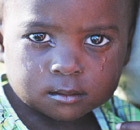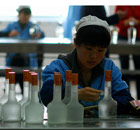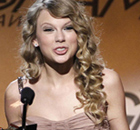Top Biz News
What's really behind the tightening credit
By Wang Tao (China Daily)
Updated: 2010-02-01 08:00
 |
Large Medium Small |
Behind all the confusing news reports and questions about bank lending and a credit freeze, we think what markets are really worried about are the fundamentals of growth and inflation. Has inflation become a bigger concern and will the government be forced to lower its growth target to fight it? What really motivated the early credit control and will much tighter credit and lower growth lead to a quicker realization of non-performing loans? How to navigate through the policy uncertainty and market confusion in the months ahead?
Our answer is that despite the recent pick-up in the Consumer Price Index (CPI), we see inflation remaining moderate and within the government's target in 2010, at 3 to 4 percent.
Our 9 percent gross domestic product (GDP) forecast for the year may have to be adjusted upward even with the ongoing policy tightening, although growth in the second half is expected to decelerate to about 8.5 percent year-on-year.
The credit control has been triggered more by banks' aggressive credit expansion in the first two weeks of 2010 than a rebound in December CPI. With continued robust credit expansion and activity growth, we do not see non-performing loans rising earlier than originally expected. With a persistent tightening headwind, slowing sequential momentum in headline growth, and an increase of share supply, the good macro outcome may not necessarily lead to good equity performance this year.
GDP and inflation outlook
We expect GDP to grow by 9 percent in 2010 and our next revision is more likely to be upward. The tightening measures are meant to prevent runaway lending growth rather than representing a sudden shift in policy stance, and we believe the 7.5 trillion new lending, an export rebound, and the continued push for urbanization will lead to real GDP growth of at least 9 percent.
Inflation has indeed come up more quickly than expected, but this was mainly driven by weather-affected food prices. Fresh vegetable prices alone contributed to half of the increase in December CPI because of unusually cold weather. We think overall CPI inflation could still be 3 to 4 percent due to the lack of price pressure from core manufacturing goods. The government may also delay and slow down some of the planned price adjustment in resources and utilities.
Of course, a prolonged period of excessive lending growth tends to lead to a rise in inflation sooner or later. In the case of China, lending growth actually had been below nominal GDP growth for a few years, before the massive re-leveraging happened in 2009 when credit expanded by 33 percent. The surge in credit growth was meant to be short-lived, anti-deflationary, and the bulk of lending had gone to investment aimed at increasing future capacity (through infrastructure) rather than consumer demand. Most importantly, consumer demand globally remains weak, resulting in spare capacity worldwide, including in China.
Credit tightening's trigger
If inflation is not going to be a big problem this year, why is the government so quick in starting to control bank lending (some say freezing lending altogether), the toughest monetary tightening method used in China?
We expect continued debate and uncertainty about the speed and methods of policy tightening in the coming months, constantly weighing on market sentiment.
We expect the government to continue to implement its intended policy adjustment - more reserve requirement ratio hikes in case of persistent foreign exchange inflows; at least two interest rate hikes starting in the second quarter (after the National People's Congress meeting in mid March) to manage rising inflation expectations; and credit control to ensure lending growth does not get out of hand.
The author is an economist with UBS Investment Research














